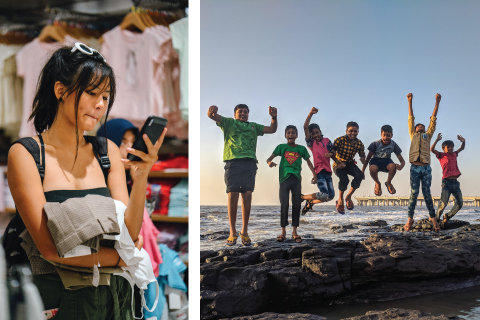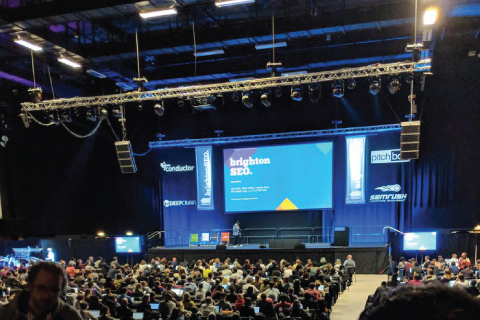Having only ever experienced BrightonSEO through industry blogs, peers and Twitter, its fair to say I was looking forward to my first taste of the ‘huge, twice-yearly search marketing conference’ down in Brighton (duh!). The September edition had seven rooms, four topics per room and keynote speaker so it is safe to assume there was plenty of SEO-based-stuff for everyone. But what are our key takeaways? Read on reader, read on!
Millennials vs. Gen Z
How many strangely named generations are there?! Well loads apparently. The well-documented ‘millennials’ are those born between 1981 and ’97, whereas Gen-Z are categorised from between ’95 and 2010 and therefore most likely think that posting anything that gets under 20 likes on Instagram is a waste of time…
However, the differences between these two demographics, and their relationship to using social media, eCommerce sites and the internet generally, raises an interesting question about how search engine marketing – and content – should be tailored as this generation becomes the main point of marketing focus.

In Sarah Bradley’s talk, she noted the varied differences between these generations and how engaging both using different content would be crucial to search engine (and social media) success.
For example, Gen-Z’s attention span is considered lower than Millennials, yet Gen-Z are far better equipped to multi-tasking. This combination of quicker, shorter windows of opportunities to engage with a new, fast-paced audience means content – and search engine friendly content – must be tailored accordingly to instantly capture a user.
Data-led content!
With content still being key to everything from link building to engaging the right users, Ross Tavendale gave a talk on how PR and data-led research on a very specific audience can be an excellent way to gain backlinks from high-quality sources such as news sites.
He outlined how a traditional approach to creating content, for backlinking purposes, had failed spectacularly for a client. Their methodology of create, pitch and then build without researching the idea (an infographic in this case) failed because there was no outside input from the actual audience that the content was intended for.
So, what do you do when one method fails? Try, try again!

The lack of actual research into the audience led Ross and his team to start over with an entirely new approach: RAP (Research, Angle & Pitch). The new method revolved around obtaining as much data about the client’s target audience as possible, meaning that – in theory – you can uncover exactly what your audience is interested in, what they are most likely to engage with, and have the ‘evidence’ to illustrate to journalists / news outlets that this piece of research or content is worth featuring or writing about.
Although perhaps not always practical for smaller budgets, it still raises that valid point of researching your audience well before producing any content. Data-led ideas will often prove to be far more effective in engaging your target audience as you can unearth innovative angles from which to talk to them.
The Future of Google
Rand Fishkin at BrightonSEO! This was a significant moment for the guys down in Brighton and even said – before Rand came on stage – that he was their ‘dream speaker’ when they were first starting out.
As per his engaging ‘Whiteboard Friday’, Rand’s talk focused on Google and the ever-changing relationship between the search engine and SEOs.
So, according to Rand, Google’s complete dominance of the search engine landscape is changing how Google interacts with users of its services. Whereas before, content creators and searchers appeared to have equal footing in Google’s eyes, the tide is beginning to turn against organic results on Google’s SERPs.

At the end of 2017, CTR’s (especially on mobile) began to change significantly in PPC’s favor. As Google continues with its mission of answering queries on the result page’s themselves, the amount of traffic clicking through to websites is diminishing all the time.
This is true for plenty of ‘real-life’ searches. Whether it’s weather updates, hotels, flights or even standard questions, all these can now be answered in Google featured snippets at the top of the page. This essentially goes back on the ‘deal’ between Google and SEOs and doesn’t reward content creators for answering searchers questions!
This recent downturn has created a Catch22 for SEOs. It has never been more important to ensure your website is central to your campaigns, and yet it has never been harder to get traffic to your site! So, what to do…?
Rand helpfully listed a few crucial pointers to survive in the new reality:
-
Ensure your website has optimised UX to maximise the traffic that your site does get;
-
When looking for keywords to target, try to estimate CTR for each keyword so that you can go for searches that are more likely to deliver you traffic;
-
Longer tail keywords are less likely to have snippets as search volumes are far lower meaning Google isn’t as likely to cannibalise them;
-
Your brand is your biggest asset. Owning branded searches is going to be crucial going forward as Google will struggle to take these search results away from you;
-
Investing in on / in-SERP SEO is vital to ensure you are featured directly on Google’s SERPs.
It is not all doom and gloom, but Google does not look to be changing its tactic any time soon so adapting to this new reality, especially before your competitors, is going to be crucial for the dog-eat-dog world of organic search!
Interesting, and potentially exciting, times ahead!